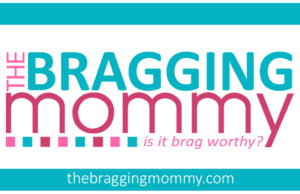The elderly global population is the fastest growing in the world, leading to increased demand for long-term care alternatives. According to the United States Census Bureau, 100% of the Baby Boomer Population will be in 65 or older age from the year 2030 onwards. This trend points to the need to think about what the best possible living arrangements for older adults will be as their needs shift. Whether you stay at home or go to an assisted living facility is an intensely personal decision, mediated by factors including health conditions, lifestyle habits, financial means and family support. Independence, cost and quality of care are just some of the and important factors in the decision-making process. This article will explore aging at home vs. moving to assisted living, featuring the main differences, advantages and disadvantages of both options.

Understanding Aging at Home
What Is Aging at Home?
Aging at home, or aging in place, is the ability of older adults to maintain a safe, independent, and satisfactory life at home. So many seniors prefer this option since they know their surroundings. These also include family caregivers, professional home care aides, visiting nurses and medical alert systems that can call for help with the push of a button.
Moreover, technology supports the appeal of aging in place, as well. To help seniors age at home, there is even more reliance on remote health monitoring, telehealth services, and smart home devices. These innovations can monitor medication adherence, alert caregivers to falls and track vital signs. Let’s look at a few key benefits and drawbacks of in-home care.
Benefits of Aging at Home
- Familiar Environment: At home, seniors are usually better acquainted with their environment, with their own belongings and memories. Therefore, this emotional comfort can be a factor of treating mental health.
- Independence: Seniors who choose to age in place can continue the routines they became accustomed to before, maintain their privacy, and decide for themselves how they live their daily lives, all of which contributes to dignity and self-esteem.
- Cost Effective: For people in good health, staying home may cost less than assisted living. If cares are few and far between, and less than full time, aging in place may save money. The average cost of hiring a part-time home health aide is well below that of full-time assisted living care, according to the National Institute on Aging.
Challenges of Aging at Home
- Safety Risks: The mobility and accessibility needs of older adults aren’t always met by the average home. Home modifications like grab bars, stair lifts and walk-in tubs can be expensive, but are often essential to prevent falls.
- Isolation: Seniors living alone may experience loneliness or depression from lack of social interaction. Such isolation can also contribute to cognitive decline and physical health issues.
- Family Burden: Family caregivers often experience stress, burnout, and financial losses, especially if they are balancing private career and own kids in addition to caregiving tasks.
Exploring Assisted Living Options
What Is Assisted Living?
Assisted living offers residents a place for seniors who need support with activities of daily living but do not require ongoing medical care. These communities typically include private rooms or apartments, meals, medication management, housekeeping, transportation and social programming.
Assisted living facilities range in size and services. Some are smaller, home-like settings with fewer residents, others are like mini-cities, with a variety of amenities, including fitness centers, libraries, on-site health care and more. Residents receive access to wellness checks, physical therapy and organized outings. Here are some pros and cons of assisted living:
Benefits of Moving to Assisted Living
- 24/7 Assistance: Staff on hand to assist bathing, dressing, and medication management, bringing peace of mind to residents and family members.
- Increased Socialization: Scheduled group activities, wellness programs, and community events are available to reduce loneliness and promote new friendships.
- No Home Maintenance: Seniors have no house roof to repair, yard work to do, or clean-up to do every other day (such responsibilities can be taxing as one ages). They eat meals, and many facilities have services like salons on campus.
Challenges of Assisted Living
- Higher Cost: Monthly assisted living fees can be significant, particularly when add-ons such as medication management, memory care units are considered. Such costs may be beyond the reach of some families without long-term financial planning or insurance.
- Emotional Shift: For seniors who value familiarity or have strong ties to their neighborhood, moving out of a long-time home can be difficult.
- Less Privacy: Although residents have their own rooms or apartments, they may feel they have lost their own space because of community living and scheduled activities.
Aging at Home vs. Moving to Assisted Living: Key Factors to Consider
- Cost Comparison: In-home care is a more affordable option when you only need part-time assistance, which is perfect for aging adults who simply need a little help. However, as care needs escalate, home care can quickly outpace costs in assisted living. As of 2024, the annual median cost of care for a private room in a skilled nursing facility was $127,750, an increase of 9% over the previous year (Genworth Cost of Care Survey, 2024), demonstrating the growing financial burden associated with assisted living.When assessing the cost of assisted living vs. home care, it’s important to consider the level of support needed, as well as housing, utilities and any caregiving services that might already be covered in the price of an assisted living facility.
- Medical Needs: Older adults with chronic conditions, memory loss, or physical limitations may need more help than a typical assisted living facility provides, which offers regular medical supervision and swift emergency response.
- Safety: Assisted living facilities are built with accessibility in mind, with features like emergency call systems, wide hallways, guard rails and other trip hazards kept to a minimum. Aging at home, by contrast, may require substantial and costly redeveloping.
- Social Activity: Seniors who live at home need to work harder to stay socially engaged, which can be a challenge if they are no longer driving. Assisted living provides daily social interaction through regularly scheduled activities, such as group games, exercise courses and communal dining.
- Family Involvement: When elderly individuals age in the home, their family is usually the primary caregivers, spending large amounts of time and resources. Assisted living transfers the majority of caregiving duties to trained professionals, relieving family members of much of the emotional and physical responsibilities.
Making the Right Choice: Aging at Home vs. Moving to Assisted Living
When aging loved ones enter the later years of their lives, one of the toughest decisions families must make is deciding what is the best living arrangement to support their health and safety and, ultimately, well-being. Some seniors do better at home, in the familiarity of their own surroundings, while others thrive within the structure of an assisted living environment, encompassing the resources and community they have there. The best decision for an individual depends on factors including medical needs, social connection, safety and the resources for caregiving support.
Here are some important factors that may help inform this decision.
- When Independent Living for Seniors May Be the Best Option
- The senior is independent and medically stable, with no serious cognitive deficits.
- A family or community network with the possibility of daily help.
- The home can be adapted safely to accommodate aging needs (e.g., single-story, no stairs, grab bars).
- The older adult values privacy, is deeply connected to their community, or feels an emotional anchor to their current home.
- When Assisted Living Might Be the Better Choice
- Increasing medical needs or mobility limitations necessitate more supervision and specialized care.
- This person is socially isolated in his home and would benefit from a structured and engaging environment.
- Family caregivers are stressed or unable to deliver regular care.
- The senior is at risk for falls or medical emergencies that cannot easily be managed at home.
How to Plan for the Future
Needs Assessment: Collaborate with medical professionals, social workers or geriatric care managers to determine both immediate and long-term care needs. Take into consideration mobility, cognition, and chronic conditions.
Financial Planning: Long-term care insurance, Medicaid, Veteran benefits, and reverse mortgages can help defray the cost of care. Therefore, it’s important to assess eligibility and plan ahead to avoid unexpected costs.
Legal and Logistical Preparation: Have all the necessary paperwork prepared, such as power of attorney, health care directives and estate plans. Such preparation can ease transitions and clarify whose orders to follow.
Family Engagement: Open conversations about interests, abilities, and long-term aspirations are crucial. Engaging family early fosters consensus and makes sure everyone understands the senior’s wishes.
Conclusion
Deciding between aging at home vs. moving to assisted living is complicated. There are pros and cons to each option, and the right choice depends on a person’s health, support system and preferences. Staying at home can provide a sense of safety, but assisted living gives you structure and professional care. Technology and home support services are making aging in place more and more possible, but assisted living is still a optimal option for people needing daily care and community.
Whatever path you choose to take, preparation ahead of time can be the key. Considering medical necessity, financial resources, and family dynamics will help seniors and those concerned about them make informed, confident choices that reflect an emphasis on safety, health, and quality of life.


